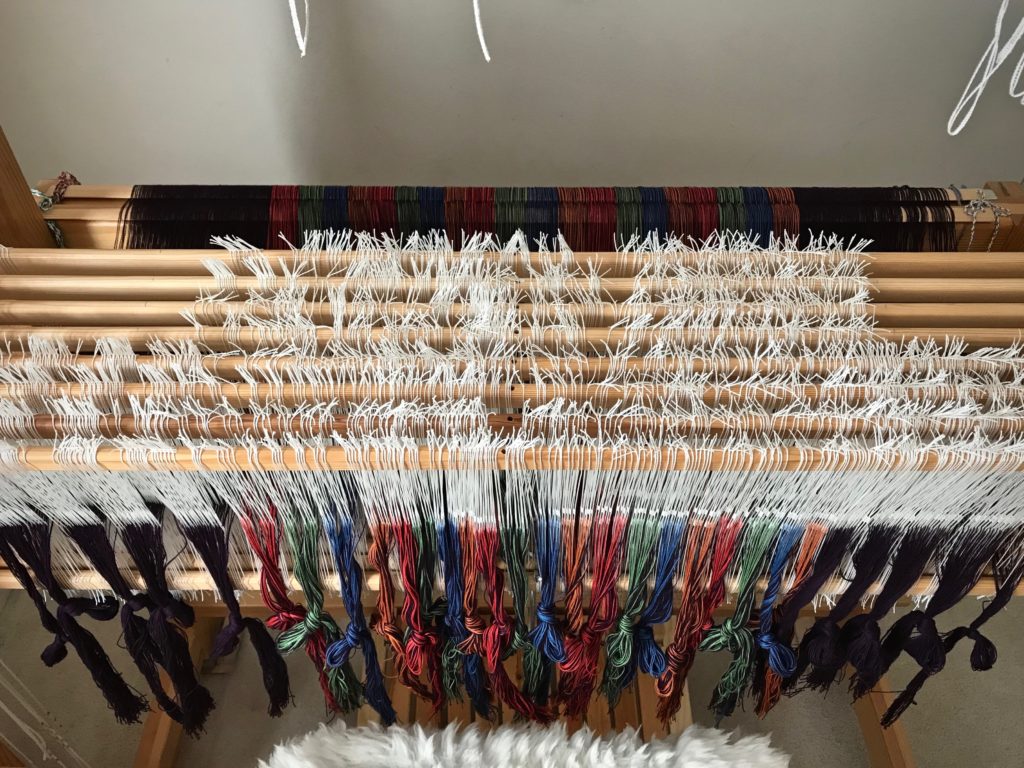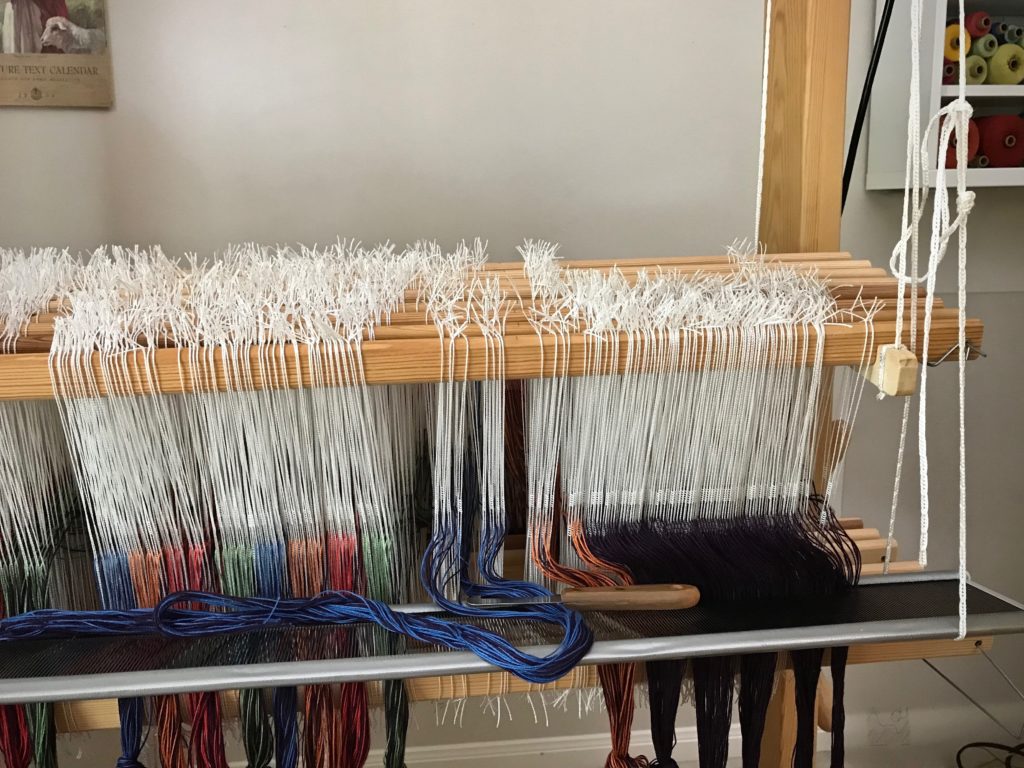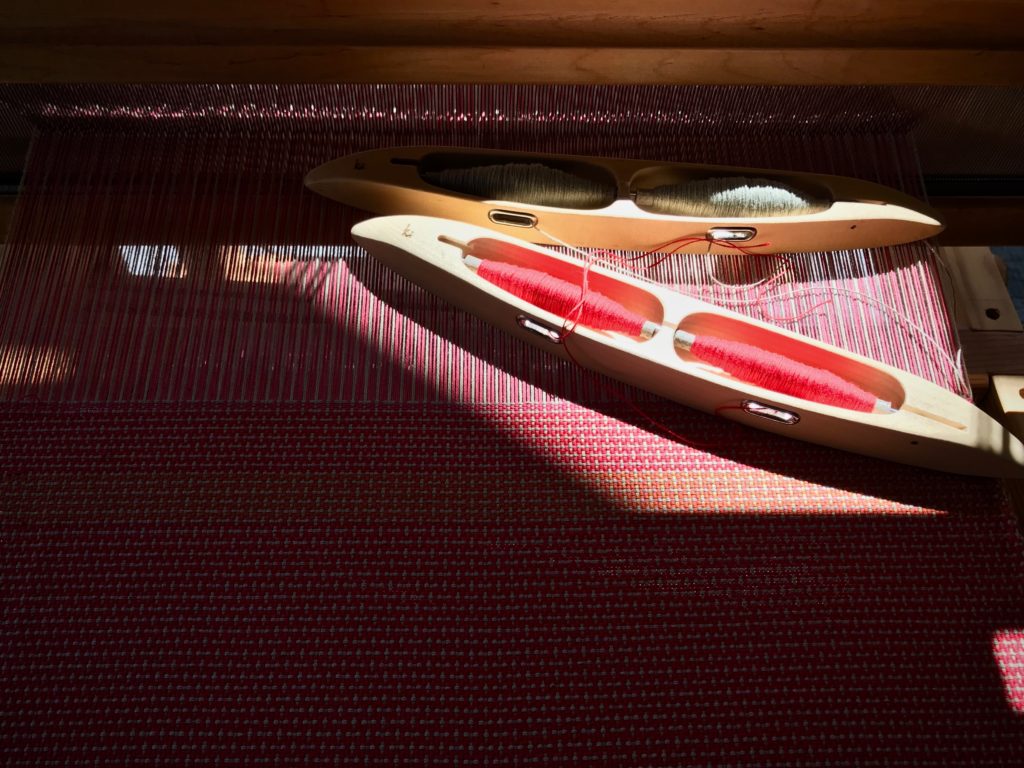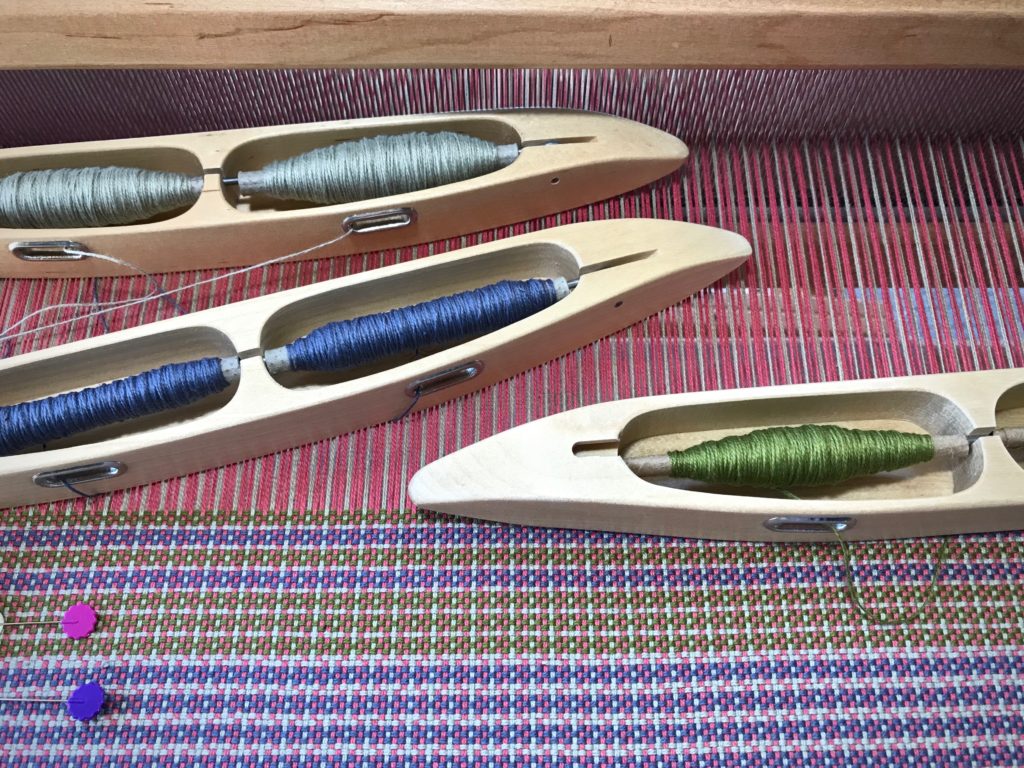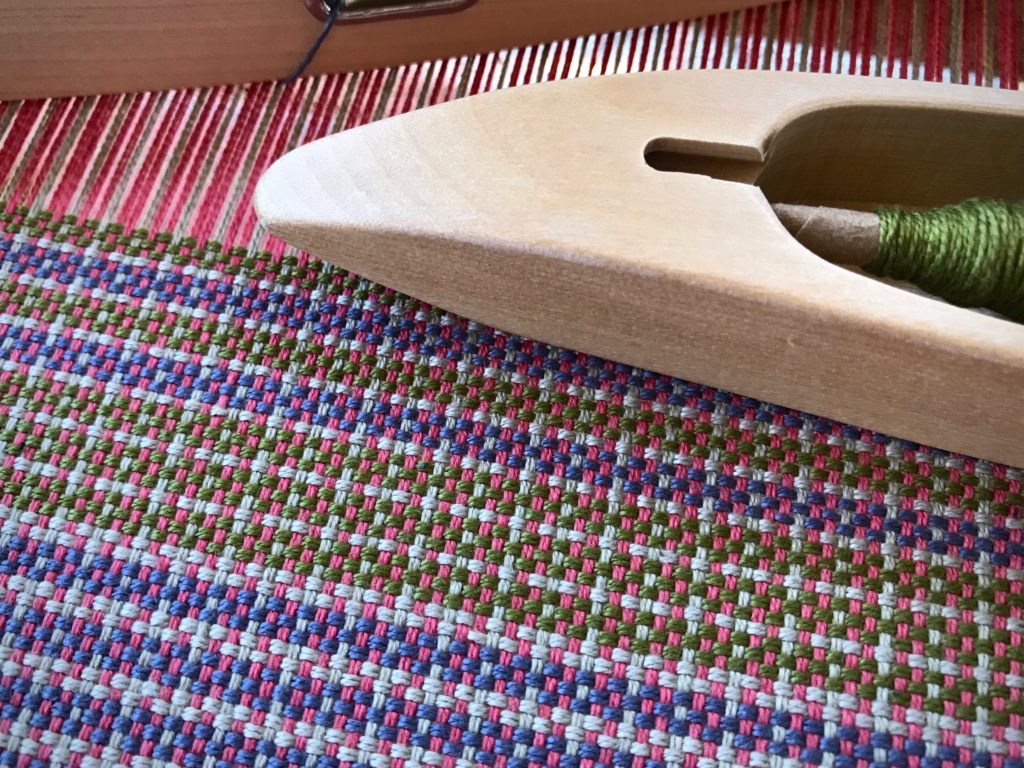It occurs to me that I am unnecessarily doing something the hard way. Repeatedly. For every new project, I pull out my tape measure to find the right set of lease sticks. The tape measure also helps me select the temple needed for the current weaving width. No more! I do like my tape measure, but why am I measuring these things every time? Why not measure them once and label them?
Solution
- Measure the lease sticks and write the length in centimeters and in inches on one stick of each pair, in pencil.
- Use a wood burner to trace the pencil markings. (My husband Steve does this part for me.)
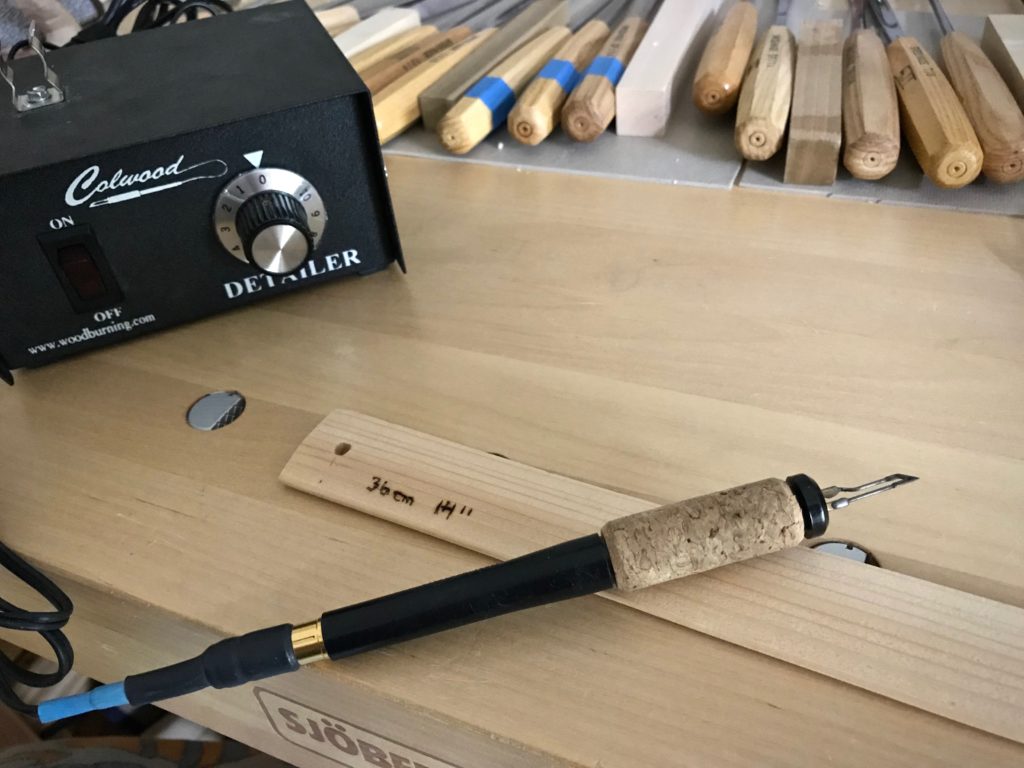
- Thread a cord through one end of each pair of lease sticks, to keep pairs together. Hang the lease stick pairs with the measurements clearly visible.
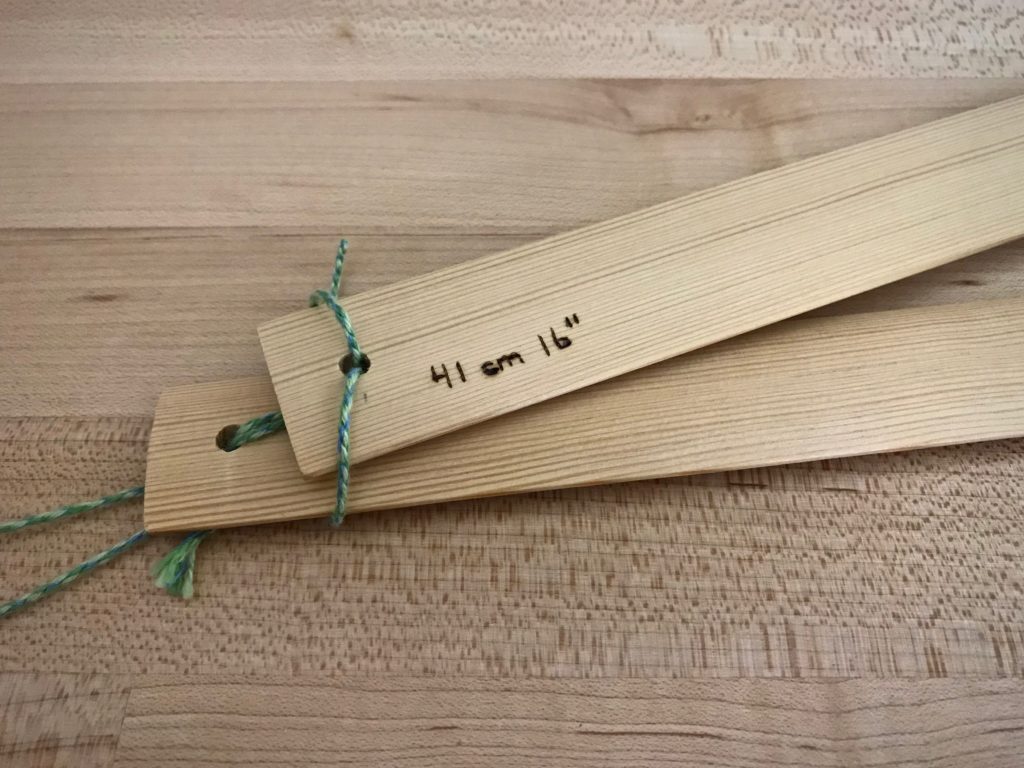
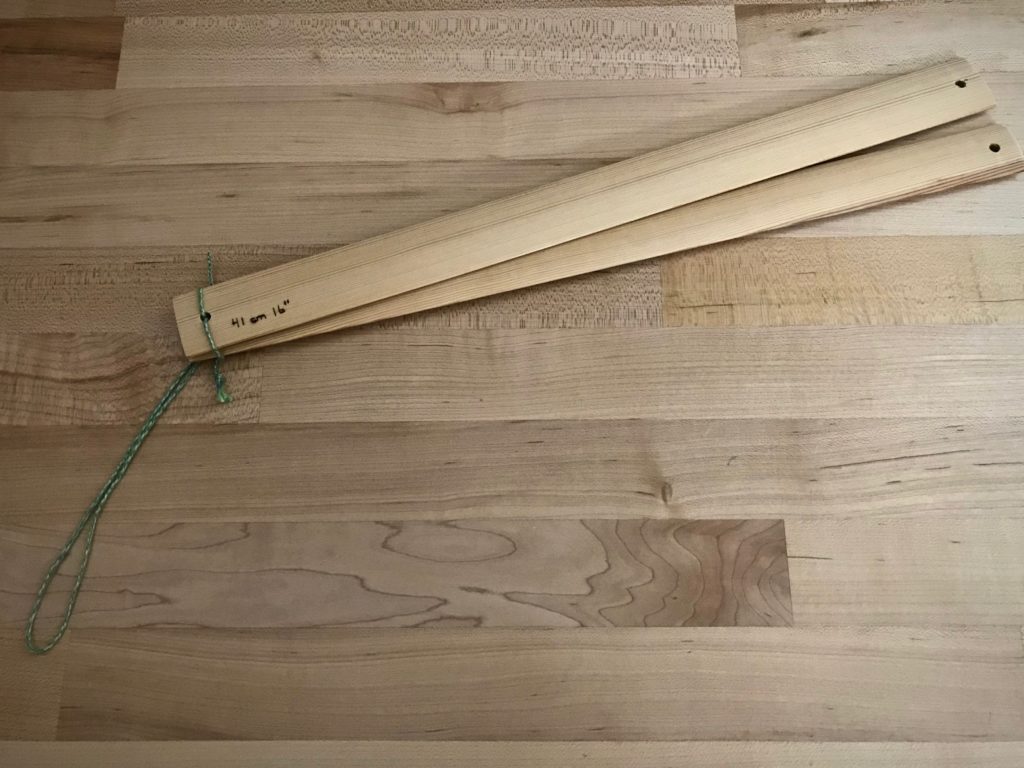
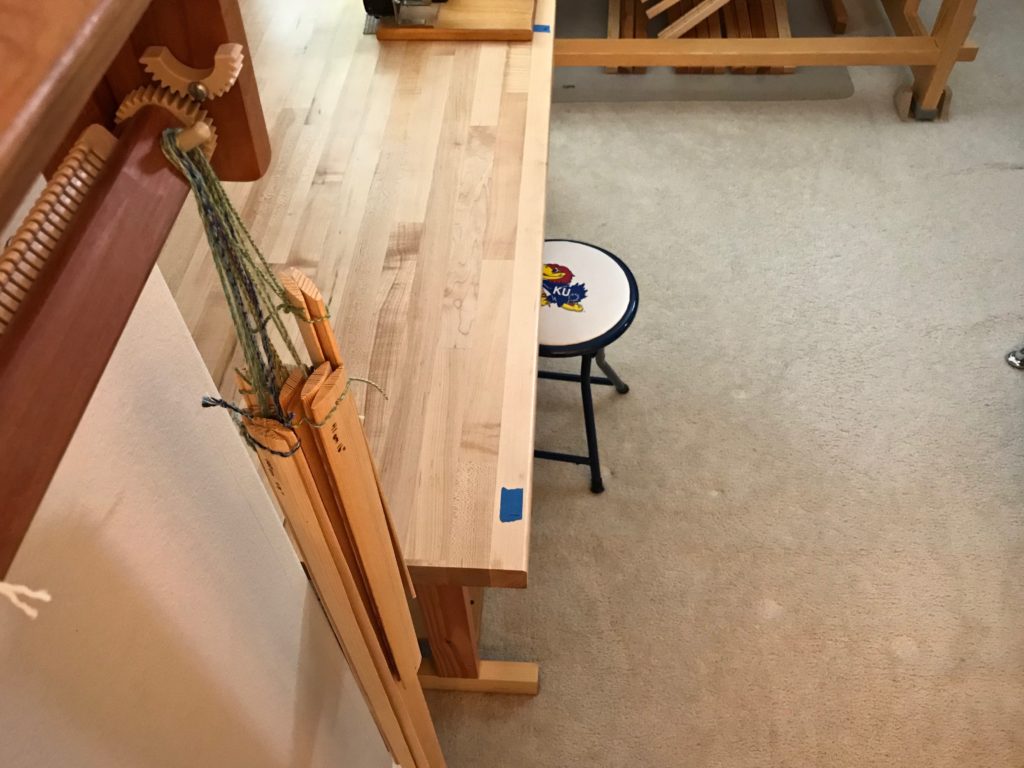
- Look up the temple sizes on a website that sells them, and write the size range in centimeters and in inches on each temple, in pencil.
- Use a wood burner to trace the pencil markings. (Steve, again.)
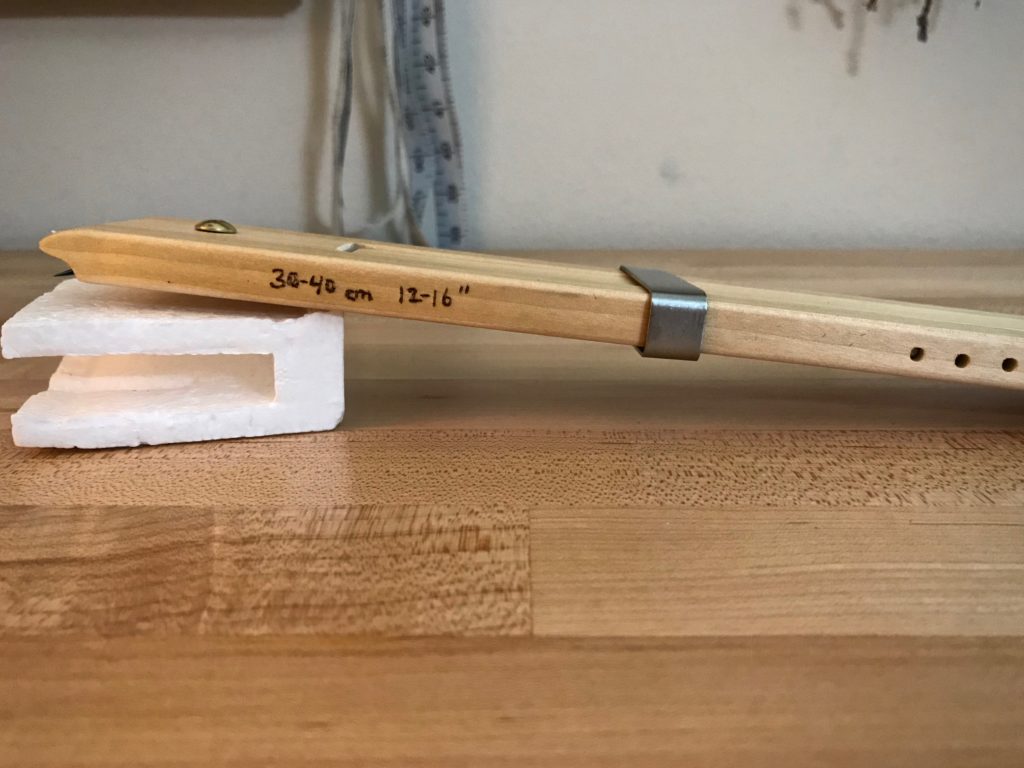
- Store the temples in a manner in which the marked measurements are easily seen.
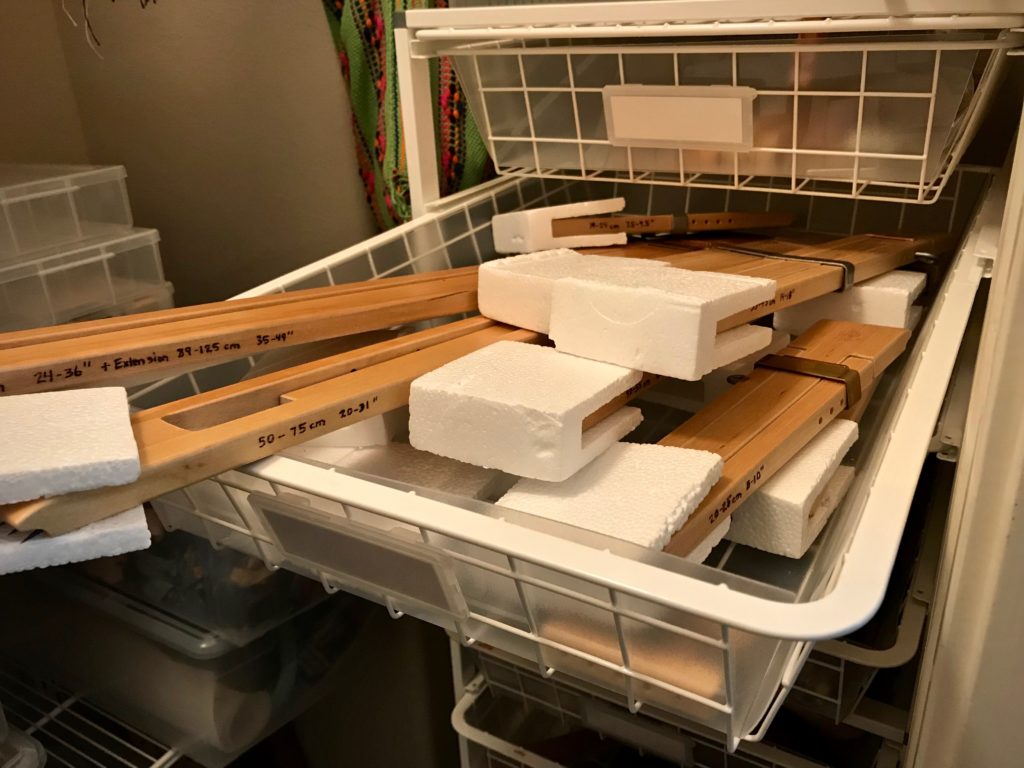
Now I have permanent at-a-glance measurements for each of these frequently-used tools!
May you find something to simplify.
Happy weaving,
Karen

